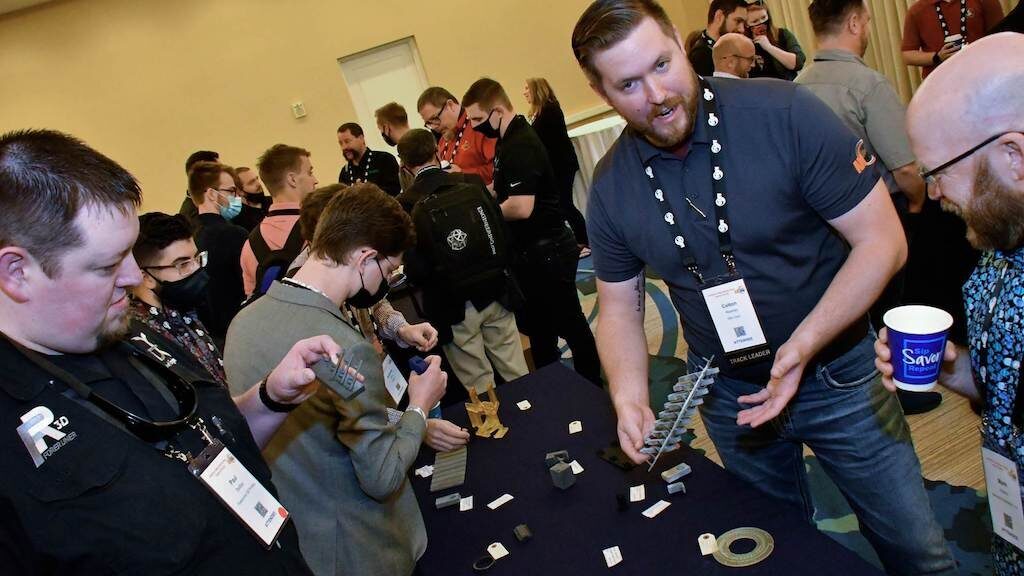
In-person events have been back in practice for a little while now, with AMUG 2021 going ahead last year after the group had to cancel their 2020 event. As the dates for the 2022 conference (April 3 – 7) draw nearer, we speak to Jordan Weston, AMUG director of education and conference, and Shannon VanDeren, AMUG medical and dental track leader, to find out what attendees from the medical device sector can expect from the event.
What should first-time attendees expect from the experience compared to the many other conferences relevant to the medical device industry?
JW: Each AMUG Conference registration is all-inclusive – attendees get access to a variety of activities each day, meals included. We do it this way to promote networking and sharing. This is not a conference where you come in for a day or two, attend the sessions during the day, and “bug out” to a dinner with a small group in the evening. You will want to spend the entire five days immersed in the conference, from breakfast to bedtime.
Additionally, AMUG is not open to the general public – each attendee is required to be an owner/operator/user of additive manufacturing technology, and this requirement is vetted at registration. This means that every person you meet at AMUG has value and knowledge to share; they will be sharing with the community just as much as they take knowledge back with them.
What sort of sessions will interest companies and professionals working within the medical device industry?
JW: AMUG has an entire breakout track dedicated to the medical industry, with a variety of presentations, panels, and workshops that have topics ranging from patient-matched implants, updates on FDA regulations for additive manufacturing, and point of care manufacturing, to name a few.
Additionally, the featured guest for this year’s AMUG Innovators Showcase is Andy Christensen, a pioneer in developing and expanding medical applications of additive manufacturing. Andy’s career includes many medical and regulatory “firsts” and high-profile medical cases – this not-to-be-missed fireside chat on the AMUG stage will take place Wednesday, April 6.
Are there any specific trends in additive manufacturing represented in this event that medical device companies should be focused on?
SVD: We continue to see steady growth, year over year, in the medical additive manufacturing market. This can be attributed to developed technologies, enhanced awareness, and applications for AM in medicine. Advanced technologies (additive manufacturing included) are encouraging to our growing life expectancy, and desire of the ageing population to remain active well into their senior years.
The medical track strives to supply answer to what is trending, what is relevant, and what is required to effectively, and efficiently, impact patient care via this enabling technology of additive manufacturing. We will have two sessions specifically geared toward the regulatory rigours involved in medical AM. We also have a few sessions that approach point-of-care printing from different angles. With the rise of patient-specific applications, we can see a demo of DICOM segmentation to create CAD models from radiographic imaging.
This will be the second AMUG event to be hosted during the pandemic, so are there any learnings you’ve taken from the 2021 conference into this one as far as safety measures go?
JW: It seems that uncertainty has been the only thing to remain constant during the pandemic. AMUG’s approach has been to monitor the ever-evolving local, state, and national requirements, and work with the venue to develop our safety measures and policies. Additionally, we understand that extenuating circumstances beyond one’s control can dictate whether individuals can attend AMUG, and it’s been our policy to commit to being transparent, consistent, and considerate as possible for any cancelations that result from that.
Networking is a big reason industry professionals attend trade events. Are there any sessions geared towards socialising and taking a break from the technical stuff?
JW: The AMUG Conference is viewed as the best event for networking and sharing, and each day of the conference is designed to encourage it. Lunches are plated and sit-down, and seating is randomised, so that instead of sitting with someone you already know, you meet new people. After the technical sessions wrap up, the networking activities continue.
The first two nights offer the AMUGexpo. Walk the exhibit floor to discover the latest services, materials, and systems while having ready access to ample food and drinks. This combination makes the AMUGexpo both a learning opportunity and social event. Tuesday night we take everyone to an offsite event for another fun social activity. Last year, AMUG rented out a section of Universal Studios and surprised its attendees with an evening of amusement park rides and entertainment.
The final two nights we host more networking, dinners, and evening activities. Even though the technical sessions have wrapped up by the afternoon, I’ve often found that some of the most insightful conversations I’ve had, as well as long-lasting connections I’ve made, had taken place during the evening social events.
Sustainability is always high on the agenda in medical device manufacturing. Are there sustainable additive manufacturing technologies or materials being presented at the event?
JW: Additive manufacturing can certainly contribute to increased sustainability of manufacturing processes, unlocked through the increased design freedom compared to traditional manufacturing. Advanced software is pushing the limits of optimising parts and systems through generative design, allowing for lighter weight and more material-efficient parts and products. Additionally, on-demand and localised manufacturing can offer flexibility in production, reduce transport routes and inventory, and overall lower the carbon footprint of a product.
AMUG’s Tuesday keynote speaker, Kevin Czinger, founder of Divergent 3D, is using this exact approach of system-level design optimisation of purpose-designed materials to change the landscape of large-scale, serial production in the automotive industry using additive manufacturing. Although Kevin’s current focus is revolutionising the automotive industry, the concepts can be transferred to any industry – medical devices, included.






